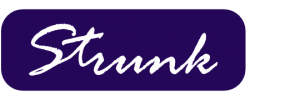Generate ODP Manager Letters by Account Number
In the hosted ODP Manager software, there are three letter types: Collection, Custom, and Ad Hoc. Collection letters are sent to accounts that are currently overdrawn. Custom letters are letters that are providing customers with information about their Overdraft Privilege program and options. The third letter type, Ad Hoc letters, allows users to generate specific letter templates as needed.
Ad Hoc letters do not require an account event to trigger the letter to show as due. They also can be used for situations where the file does not contain the necessary data to show a letter as due. In either of these situations, when an ODP Manager user has identified an account or accounts that should receive a letter, they are able to generate the letter by entering the account number(s). Letters can be generated one account at a time, or multiple account numbers at once.
Ad Hoc letters can benefit institutions in two ways. First, generating the Ad Hoc letter in ODP Manager allows users to eliminate the manual process of populating a letter with a customer’s name, address, and other account information – the hosted ODP Manager software can pre-fill this information once the account number is entered. Second, generating the Ad Hoc letter directly in ODP Manager allows users to track and retain the letter in the software – just like the Collection and Custom letters generated. This allows users to have a single location to look for letters that have been generated on an account.
The inherent flexibility of the Ad Hoc letter template feature may allow institutions to accommodate all Overdraft Privilege Program-related letters – not just letters included in the standard Collection and Custom letters. If users need to close and charge off an account before the standard number of days overdrawn, they can use an Ad Hoc letter to generate an Account Closed letter. If there are ODP-related letters that are sent in specific situations other than those covered by the standard letter templates, Strunk can create the letters as Ad Hoc letter templates. Ad Hoc letters can also be used to generate Fresh Start Repayment Plan agreements.
If you have any questions about using Ad Hoc letter templates in ODP Manager, please contact Strunk Support at support@strunkaccess.com for more details.


